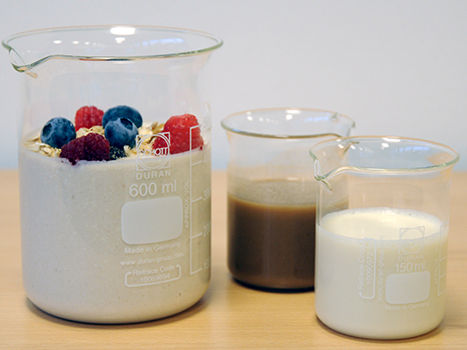Remote Work for Industrial Companies: What really works
Communication in times of Corona
Advertisement
During the coronavirus pandemic crisis, companies are looking for ways to adapt their work to new situations. Everybody is talking about ‘working from home’, but by no means can every type of work be done from a desk at home. Often, it is necessary for people to be present on-site, not only in production but also during inspections or for troubleshooting and repairing machines and equipment.
Usually, when problems arise, experts have to be called in by telephone, email or video. For complicated errors, it might even be necessary for them to come by in person. Support by phone or email is time-consuming, tiresome and often associated with misunderstandings. Video calls are not interactive enough, and the physical presence of an expert is expensive. When travel restrictions are in place, the processes for maintenance, checks and repairs break down completely.
Companies have long had more effective communication technology at their disposal than Skype and its peers: With Augmented Reality integrated into process and control apps, companies can collaborate visually over long distances in real time. This gain in efficiency will remain of value even once the crisis has passed.

Using Augmented Reality, experts can help workers with concrete visual instructions directly at the machine as if they were on site, regardless of their actual location.
RE’FLEKT
What advantages does AR offer and why are innovative remote technologies such as REFLEKT Remote ahead of traditional communication channels? We’ll demonstrate why remote work with Augmented Reality is so beneficial, both during and after the pandemic crisis, as well as how it saves companies time and money.
Key applications for AR in industry
Many companies already work successfully with remote AR: They report higher efficiency through time and consequently cost savings. Remote AR is particularly effective in two key areas:
1. Enhanced Remote Support
Employees can consult the relevant experts via chat or video. A diagnosis can be made or the way to solve an error can be marked via AR annotation, either on photos or directly within the video call. Participants work together in real time and seemingly at the same location using a smartphone, tablet or AR glasses, such as HoloLens 2, Realwear HMT-1 or a Vuzix M400. Since all participants see the same image, they can make precise diagnoses and find solutions together.
Service teams can call in specialists for repairs who don’t have to travel to the site first. Instead, repairs are carried out on the spot under direct and visual guidance of the expert, which minimizes machine downtime.
Compared to a video chat or even email, this type of exchange with remote AR works faster and is frustration-free.
2. Find errors faster with AR guidance
Put away those hard-copy manuals: With digital and AR-supported guidance, errors due to inadequate descriptions, outdated images or checklists are a thing of the past. With digital guidance that can be updated any time based on existing technical documentation, almost every employee is able to carry out AR-guided inspections or assemblies. Step by step, employees are visually guided through the respective process and see exactly what they need to do via markers and instructions on the display of the smartphone, tablet or data glasses. In addition to AR markings, animations and digital overlays over the real machines are also possible. For example, the mechanical engineering company ERIKS uses AR-supported remote work for the maintenance and repair of complex machines. With the remote app from RE’FLEKT, workers are connected to the right expert at the touch of a button. The expert can draw advice and tips directly onto a photo or video of a component. This visual guidance through Augmented Reality speeds up the problem solving.
This approach is also suitable for education and training: AR-guided training, for example in the assembly or repair of a machine, can be more effective and time-saving than traditional training where an instructor must be on-site. Via remote AR, the trainer can supervise more trainees at the same time, and the waiting times are shorter for trainees.
Collaborative work with AR is a solution for every industry
Methods and applications proven to work in times of crisis can be the foundation for further increases in efficiency even after the crisis has passed. REFLEKT Remote offers the necessary scalability. The more areas in a company collaborate via remote AR in real time, the better and more efficiently their daily workflows can be organized and structured.
The range of possible applications makes remote assistance with Augmented Reality particularly interesting: Servicing, repairs and maintenance processes are common in almost all companies.
Error rates can be significantly reduced for everything from the assembly of furniture to production machines. AR precisely displays the structure of devices and vehicles or the layout of electrical lines. In addition, there are possible applications in plant engineering, in automotive manufacturing, in the health sector and in training and education in general.
For companies the help of specialists needs to be fast and easily available at different locations, regardless of the physical location of the expert.
Other news from the department business & finance
Most read news
More news from our other portals
Something is happening in the food & beverage industry ...
This is what true pioneering spirit looks like: Plenty of innovative start-ups are bringing fresh ideas, lifeblood and entrepreneurial spirit to change tomorrow's world for the better. Immerse yourself in the world of these young companies and take the opportunity to get in touch with the founders.






























































